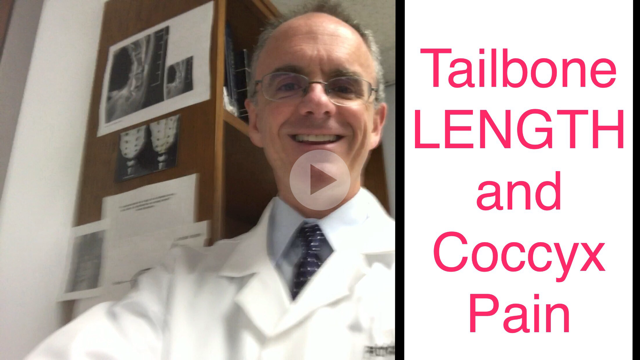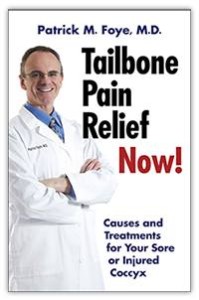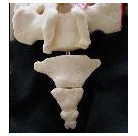Does Tailbone LENGTH cause Coccyx Pain?
- Here’s a recent video discussing whether the length of the tailbone results in coccyx pain (tailbone pain, coccydynia).
- To reveal the video, click on the image below, or on the link:

- Link: https://youtu.be/QH0bTOqSovc
Here is the text from the video:
- Hi. I’m Dr. Patrick Foye.
- I am the Director of the Tailbone Pain Center, online at www.TailboneDoctor.com
- This is a short video in response to a question about whether the length of the tailbone is correlated to whether somebody does or does not have tailbone pain.
- In general what’s more important than the actual length of the tailbone is the position of the tailbone and whether the joints are unstable.
- So there’s a lot of variability in terms of how long the tailbone is: in some patients there’s only three bones within the coccyx so three individual vertebral bones that are strung together. In some patients there’s four and some people there’s five.
- So there’s a lot of variability in terms of the number of bones and the overall length of the coccyx in general.
- But what becomes important is the positioning.
- So whether it’s a relatively long or short tailbone if it’s curved backwards or has a bone spur (a little bit of additional boning material on the lower end) that can be a source of pain when somebody sits, especially when they’re sitting leaning back.
- Or, whether again the tailbone is long or short overall, if there is instability within the joints (if the ligaments that normally would hold the joints in place are not doing their job of holding the joints in place, of holding one bone in relationship to the next) then again people can have tailbone pain, especially when they’re weight-bearing (which for the tailbone her coccyx is when they’re sitting, and especially again while they’re sitting leaning back).
- So, in general, more important than the actual length of the tailbone is the position of the tailbone, which can be seen on x-rays and MRI and CT scans.
- And more importantly because more commonly it’s whether there is instability whether the joints at the tailbone are not stable and that can be assessed mainly by doing sitting versus standing x-rays of the tailbone.
- So we look at the position that the tailbone is in while somebody is standing up and then we have them sit and lean back in their most painful position and then we repeat the x-rays and see what position the has moved into while they’re sitting and putting their weight on to the tailbone.
- So I hope that’s helpful just in answering the question of whether the length of the tailbone tends to be correlated with whether somebody does or does not have tailbone pain.
- If you’re looking for more information certainly you can find me online at https://tailbonedoctor.com
To come to Dr. Foye’s Tailbone Pain Center:
- Get expert medical care for your tailbone problem. Here’s what you need know: https://tailbonedoctor.com/prepare-for-your-visit/
Tailbone Pain Book:
To get your copy of Dr. Foye’s book, “Tailbone Pain Relief Now!” click on this link: www.TailbonePainBook.com

Book: “Tailbone Pain Relief Now! Causes and Treatments for Your Sore or Injured Coccyx” by Patrick Foye, M.D.
Latest posts by Patrick Foye, M.D. (see all)
- Coccygectomy: Expected Recovery and Return to Work after surgery for coccyx pain, tailbone pain. - November 28, 2023
- PRP Platelet Rich Plasma or Prolotherapy for Tailbone Pain, Coccyx Pain - October 25, 2023
- Reasons for Normal X-rays and MRI Despite Tailbone Pain, Coccyx Pain - October 3, 2023

